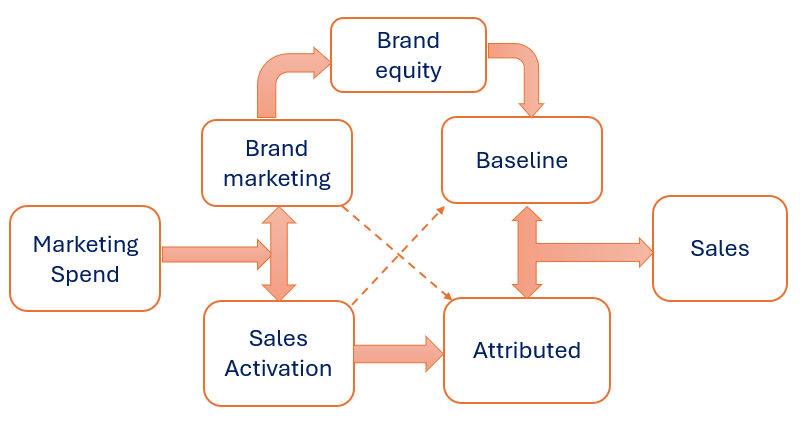The answer to the question in the heading is key to understanding the entire process, so we will start there. You are paying for your business to be top-of-mind for the customers when they are looking for your type of product. Called “mental availability”, this is an essential pre-requisite to any sales; if the customers don’t know you, don’t find you when they search, or have low opinion of your product – they will not come.
Your potential customers can be split into two groups: those who are in the market for your product type, and those who are not – typically a much larger group.
Communications to the first group aim to persuade, so they lead with benefits and rewards. This is often called sales activation - it shows results within 1–2 sales cycles, but its effect quickly dissipates once the stimulus is removed.
The goal of communications to the out-of-market audience is to create positive memories associated with your brand, so they lead with emotional appeal and creative ideas – brand marketing. Their effect is felt on the timescale of 2-3 sales cycles or longer, but it persists long after the campaign has ended, gradually reducing over time. Research shows that some campaigns deliver the bulk of their returns within 1-2 years afterwards (See Profit Ability 2 study, search for "Full payback").
This portion of marketing spend has all the hallmarks of investment, which is why marketers talk about return on ad spend vs return on marketing investment and brand equity.
It contributes to brand equity — the lasting reputation and recognition that keeps customers coming even without active campaigns. This equity underpins your baseline sales. The diagram below shows how these concepts connect:

In other words, brand equity sustains your baseline while sales activation primarily delivers attributed sales - together, they make up total sales.
Ok, but how do you compute these metrics? We have a method for that.